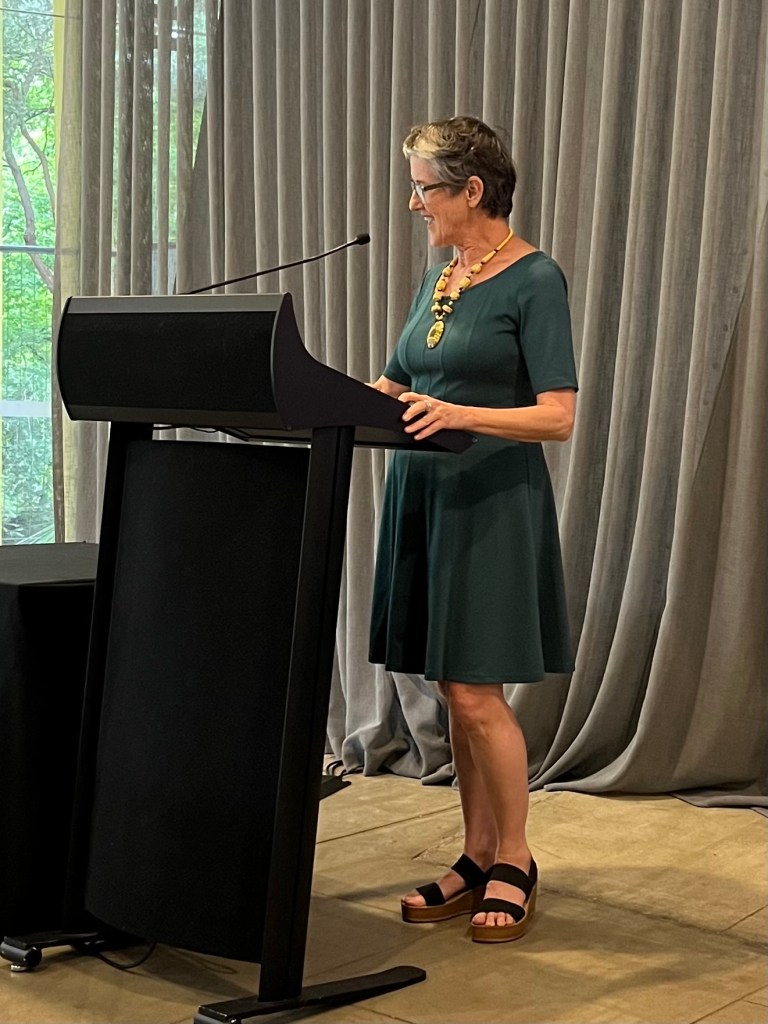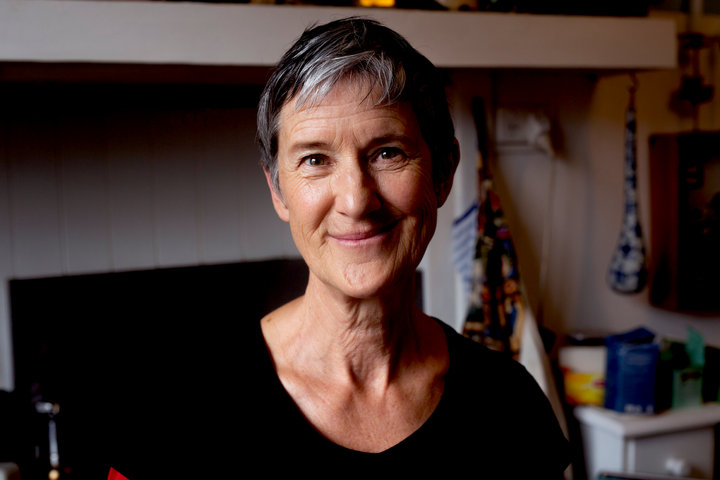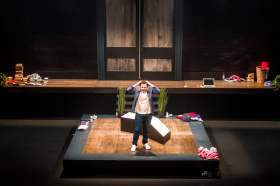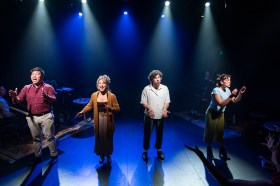I come from a long career in the performing arts as an actor, writer, director and designer and, for half of this career, as a freelancer or independent artist. The other half so far has been with Polyglot Theatre – a small to medium organisation based in Melbourne. For the majority of the 45 years I’ve worked as an artist I’ve been involved with children and young people as audience and as collaborators, in community practice, collaborations with First Nations communities, with Disabled communities and artists, and in partnerships with many funding bodies and trusts and foundations. A lot of the time this has meant going deeply into the impact of the art we create – not only from an aesthetic point of view, but what it does to and for people who engage with it, whether as collaborators, participants or audience.
My other hat is an advocacy role – nationally as Interim Chair of Theatre Network Australia and internationally as President of ASSITEJ International – the global association of theatre and performance for children and young people. I’ve just returned from one of ASSITEJ’s Artistic Gatherings in Serbia, where the delegates, mostly members of our association, gathered together to see local and regional work, to exchange ideas and to engage in professional development. But it was mostly to see each other, to hug and catch up and to find for ourselves the strength or resilience that comes from the collective – so that we know we are not alone. This is a necessity in a sector that too often relies on sacrifice to make things possible – more on this later.
The conversations, presentations and panel discussions in Serbia offered a huge variety of examples of the importance of art for children and young people and to the community: a multidisciplinary cultural centre created by artists to serve a rural community; a project where plays are created with and for specific families, who read them together as the cast and perform with other families in public; theatre and performance with and for people in the streets of Yaounde in Cameroon; an art centre created in a war zone to create a safe space for children to continue learning and play; programs for young people to have their own voice, leadership and creative expression; theatre for young people whose rights are violated. I was impressed by the focus of the festival as it reflected a more active concern from some of our European members, with the well-being of populations – a concern to reach to where children and young people are, rather than the old-fashioned model of creating work for and in theatre buildings. And through this active concern, exploring further and deeper into different forms and modes of presentation than before.
In Australia we have been working in this way for some time, partly because of our wealth of independent practitioners and organisations who work in eclectic ways, and reach into schools, communities, public spaces and multiple art forms, and also because we have always needed to justify our work for funding support on the basis of impact. Because of this we have been collecting evidence for years.
When I first heard of the Betty Amsden Foundation’s decision to deliberately focus on the arts, I felt many things. I was then the Artistic Director of Polyglot Theatre. I was thrilled to know that one of our key supporters had decided to support culture in a time when arts funding was in flux. As someone who works in advocacy for theatre and live performance nationally and globally, I was excited to know that a philanthropic body was making a point of arts funding, believing in our sector to the extent of changing the direction of the Trust. It was a decision that seemed to come from the awareness of the role the arts play in our times of crisis, the importance of providing foundations and consistency for a sector that deals always with change. For the whole arts sector this was good news. This was also a decision that had the possibility to influence others, an acknowledgement of the importance of what we do and a leadership statement that had everything to do with Betty Amsden’s relationship with the arts – from community projects in Melbourne’s disadvantaged schools to The Australian Ballet.

It was great news for the arts. For our company, working in theatre and performance for, with and about children, it was the promise of allyship and support for a sector that was also one of Betty’s passions – art and performance for young people. What is vital to know and explore further though, is what art does beyond the finite projects that make their way into the public gaze. At this point in time, we are receiving constant news and information of crises beyond our imagining – environmental, economic, geopolitical. The world seems to have gone mad, once again. And it is time, once again, to examine what art does and can do for audiences and communities – for our collective longing for interpretation, for release, for escape, for catharsis, for solace – to make a difference.
I was recently in Johannesburg, South Africa for a festival of theatre for young audiences, where I saw the most invigorating, delicate, profound and hard hitting work, tackling subjects that people rarely dare to speak about in other ways. Tackling gender violence, domestic violence, racism, sexual abuse in a country that is still trying to find its way after the hideous history of apartheid, accumulated effects of generational disenfranchisement, poverty and unemployment and now the post-COVID economic disaster. Despite this astounding set of challenges, the work I saw lifted audiences to their feet, clapping and dancing, singing and crying. We felt, breathed and lived through the stories and characters on stage with all our hearts. The theatre and the collective experience were how we could talk about things, express our shock and deep sorrow, feel empathy. We were reminded of the importance of release and the saying of things out loud.
Recently at Melbourne Theatre Company (MTC), the father character in My Sister Jill (a play by Patricia Cornelius) who is deeply scarred in World War II – is told ‘we mustn’t speak of it Jack, they told us not to – we have to think of good things’. And instead, his suppressed trauma and frightening anger lashes the family over and over again.
A youth arts company in South Australia – Riverland Youth Theatre – has reimagined itself with artistic director Fleur Kilpatrick as a safe place first and foremost – recognising the young people in the area (and they reach across a distance of 200 kilometres) are in dire need of self-expression and ways to be themselves without fear. Those young people now have a place where they know they are appreciated and respected and have the possibility of finding their own voice and place in a society that offers very limited options, if not real danger.
Rumbalara Football Netball Club in Shepparton, Victoria, welcomed arts into its sporting community with open arms, knowing that the kids who turned up each week at the home game, and who weren’t playing footy or netball, could find a way to be valued and seen by their families and friends through the work they did together with Polyglot. Those kids experienced different ways of interpreting their lives and, through their imagination and expertise in play, found confidence and capacity and aspirations they and their families didn’t know they had.
The growth of creative confidence in children is one element of the arts that has resonance throughout a person’s life. From the very youngest babies in arms, the effect of theatre and performance on the young mind is startling and a vital piece of their beginning. Those fiercely active brain synapses are working to make connection after connection – curious as little scientists. Once the synaptic pathways are chosen and we start to shed the ones we don’t use very often, an injection of play can reopen the possibilities. Teenagers invested in the process of performance from classical ballet training through to improvisation and making up plays – investment in creativity in any of its forms – discover their own powers and perception, their own choices and values and their own voice.
The House of Muchness in Melbourne makes an arts process of deep listening and respect, making space and place for young people to contribute meaningfully, and showing the adult world what they have to offer. Art does this – not a leadership program, or an accelerated class – art creates a path for the young people in that organisation that is about their perspective, their way of seeing, and invites adults to listen and learn. What could have a greater positive impact on a young person than to have adults interested, listening and watching while they say what they feel and think?
The arts sector in Australia is pretty collegiate. I would say we are especially lucky here in Victoria because we have a critical mass of artists and organisations and, especially since the pandemic and our world record lockdown, a keenly honed sense of community and care. We are friends with each other, we make time to talk. We understand the impact of what we do and why, outside of our economic business plans. Artists are workers in the realms of the imagination, working in a job that reaches many on many different levels. We understand what the individual is within our companies and what the toll is on people as they continue in this sector. It’s a job, it’s a tough job, and it’s a job that we love, and we don’t talk enough about what it is that actually happens when we do our job.
The work that goes into the multiple levels of effect and impact around a creating art – whether performance, visual, technological or written word – is real. The creative process – the act of building something, the drawing together of collaborators, the engagement of a group in a vision – is an act of hope. There is courage in creation, starting something from nothing, making things up that resonate with the collective experience. And the impact on your audience can never be fully understood. Art reaches people where they are, in the contexts each individual comes from. The artistic intention is one thing, an audience’s reception and understanding another. Works can and do create debate, and debate is an essential skill that we are losing in an increasingly black and white world. Art creates grey areas, wonder, sows doubt, invites interpretation as well as provides it. It offers ways of understanding through all the senses and offers universality as well as personal connection. It frames and deepens, interprets and questions. Communicates with us. Moves us. Offers the possibility of change. Opens windows into other cultures and experiences. Art is ideas and heart.
During the pandemic, my husband Ian and I started singing to his parents who were trapped inside an aged care home, unable to leave or receive visitors. They’d contracted the virus, were desperately unhappy and couldn’t understand what was going on. Ian asked friends who were musicians if they would come to the residence to play for the people inside. No one was getting paid for their work then, and many had no source of income at all, but they knew what they had to offer and they offered it. For free. To play, to express, to bring joy and distraction, to make someone smile. Those artists were then supported, through philanthropy and Melbourne Fringe to do a project that went to five aged care residences. They sought out residents who had not forgotten their own musical skills and brought out the sax or the piano to join in. They filled corridors and lounges – residents and staff and family members, all singing together. It was a simple project that had immense impact and begged the question: why isn’t this happening in every aged care residence?
Supporting art that can be anywhere is a huge part of how the impact in everyday lives can be a positive one. A wise colleague in South Africa once said: art is not entertainment, it’s entertainment of ideas. Whether that is loneliness or war or sexual abuse or a difficult friendship or colonialism or power or finding courage or making people laugh or strange synergies or simply beauty. Art makes humans feel, and the beginning of personal and social health is being able to feel. Empathy. Putting yourself in someone else’s shoes. Art does not have to tackle specific issues to have enormous effect on the human psyche. George Braque, 20th century painter, once said, ‘Art is a wound turned into light.’ Wherever, whatever and whenever, it has the capacity to transform and it has the capacity to outrage. You might not understand it, or be scared or intimidated by it, or you can adore it, be transported by it, be undone by it, but the more there is, the less you can write it off. We are all surrounded by art. It is essential and it is everywhere. But here in Australia we have to support its being or many will not have the chance to engage.
This is why supporting the arts makes so much sense. From the youngest developing brains, to the oldest among us, the arts have a tremendous role to play in our connection to our ourselves, our innermost beings, our families and friends, our communities and our history, culture and spirit. And they have a real and tangible effect on well-being and mental health. From a recent forum in Western Australia with young arts companies, the participants came up with a list of some of the things they observe that the arts provide:
- well-being, connection and inclusion
- places to connect socially that are safe and relevant
- a place for the community to share important stories
- the tools to work through issues that are affecting people on a global and personal level
- outreach projects that connect people in remote regions
- a place for the disenfranchised who feel like they don’t fit in
- two hours a week of arts engagement that are the equivalent of the 20 minutes of exercise (according to research by Christina Davies)
- opportunities to work in a team and empathise with peers
- young people who aren’t into sports with a chance to connect and be included
- a chance to shine and have fun – giving relief from heavy issues, and
- a way to keep children in school and people out of prisons.
And they make people feel.
Betty [Amsden]’s pure enjoyment of art in all its forms was palpable – her delight in the huge-scale public art projects, the pianos across Melbourne, the big dominos, the cardboard boxes and elastic, the huge productions on stage. Her delight in the very small, intimate moments she had with children, talking intently and with great interest as they clustered around her like she was a magnet. Her very real and personal interest in artists and their pathways. She believed in the practical outcomes of the arts as well as their intangible, powerful, less visible effects and, mostly, she believed that art should and must be part of life.





